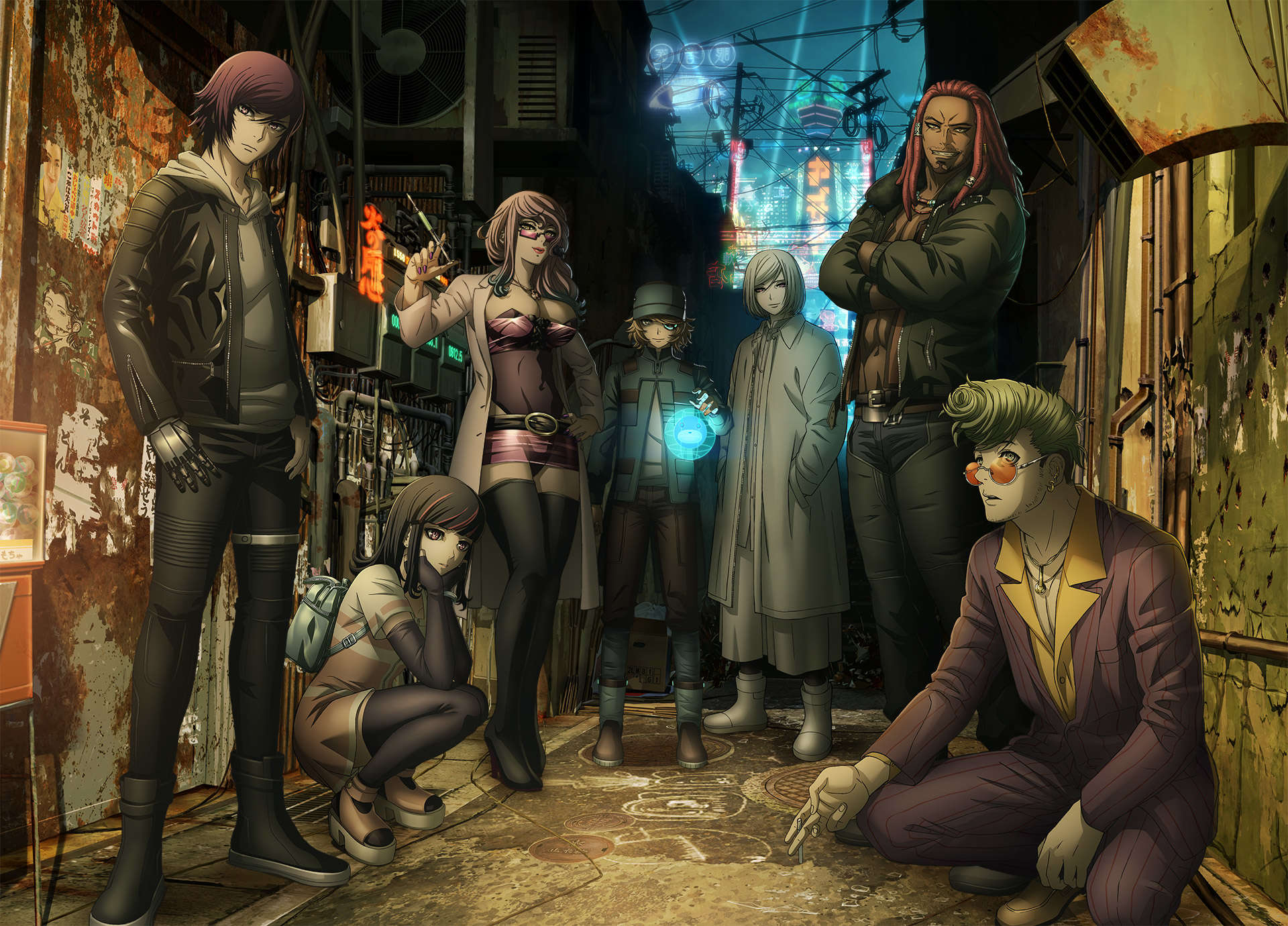Create a free profile to get unlimited access to exclusive videos, sweepstakes, and more!
'Akudama Drive' will make you believe in cyberpunk again

Cyberpunk is one of the most easily identifiable genres in sci-fi, with a unique look and a tradition of hard-biting social commentary. Today, though, the genre is mostly used as a pretty aesthetic rather than as a vessel to tell poignant stories. There have been so many cyberpunk titles in recent years that seem to forget why the genre exists in the first place that the few that actually embrace the "punk" roots of the setting are all the more special. Such is the case of Akudama Drive, an anime with the shiny cyberpunk look you know and love and also some timely commentary on the role of police in authoritarian states.
Taking place after a civil war between the Japanese regions of Kansai and Kanto, which resulted in a nuclear wasteland separating the two, Akudama Drive starts out as a fun Suicide Squad-style anime with a group of criminals banding together for a big heist job. The first episode fully takes advantage of the audience's familiarity and expectations of the cyberpunk genre in order to get your attention before slowly peeling the glitz away to reveal its punk core. Kansai looks like your iconic Blade Runner-esque Los Angeles, minus the orientalism. There's a metric ton of neon lights and fancy holograms in this perpetually dark and smoggy city. In Episode 6, we see an epic fight scene take place inside an arcade, and it's just as visually stunning as you'd expect.
Now, this isn't anything special or new. Most cyberpunk titles to come out in the past few years have put the most effort into nailing the aesthetic made popular by Blade Runner and Neuromancer, but they haven't done much more than copy those relatively superficial visuals. Whereas the run of great cyberpunk stories from the '80s and '90s like Akira and The Matrix used their aesthetics to tell poignant stories lashing out against an unfair world of corporate greed, social unrest, and fear of what technology could do to our day-to-day life, by 2021, we've basically reached the dystopia the genre was fighting against. What Akudama Drive does is look at the nascent problems we see around the world today. And it's not tech-based, but ideology-based.
Back in the golden age of cyberpunk, the police were depicted as mostly a privately-owned entity to comment on the rise of mega-corporations having a huge influence on all aspects of life. Just look at RoboCop for a prime example. Together with a warning about the rise in our dependency on technology, these themes were cyberpunk's bread and butter. Certainly, in the present day, we already know and feel the influence of corporate power in shaping society, just like we know the internet allows users to create a different persona while online. We don't need a reminder. What Akudama Drive does so well is blend modern flashpoints — like understanding that the police don't need to be dystopian corporate enforcers in order to shoot unarmed civilians and enact violence against the public — into the cyberpunk of old.
In this contrast between the familiar and the new, Akudama Drive thrives. Not just in its social commentary updating just enough to feel fresh, but in using the familiarity of the cyberpunk aesthetic to lure you in while unveiling its own vision for the future of the genre. Though the main setting of Kansai looks straight out of Blade Runner, the story eventually takes us to Kanto, which looks unlike anything you've seen in the genre: not a rainy, neon-lit dystopia, but a floating mess of debris. This is not a shiny utopia, but a city where everyone uploaded their minds to a server and now live body-less, mindless lives inside a cold, inhuman dream where there is no crime — but also no freedom.
Though the appearance of Kanto's cyberpunk utopia is just long enough to make an impression but doesn't play a big role in the show itself, the commentary on police brutality is front and center for the entire anime. In Akudama Drive, criminals are branded as "Akudama." Though we are never given a definition, it becomes increasingly clear that it's just a blanket term for anyone deemed unfit for Kansai society. It's a term given to group someone who swindles $5 worth of street food together with a serial killer dubbed "Cutthroat." As we meet the members of the crew, we only know them by their role in the crew, "Hacker," "Doctor," Brawler," and the number of years in their prison sentence, which seems completely arbitrary — the getaway driver has a longer sentence than a sadistic doctor who kills people for fun, and nearly as long a sentence as the serial killer. In the world of the show, Akudama are hunted down and killed on-site by Kansai's lightsaber-wielding police.
Though not necessarily a groundbreaking theme for an anime show, Akudama Drive's exploration of police brutality is more than subtext or window dressing, exemplified by the fact that the cops in the show are literally called "Executioners." The show is unapologetically and unequivocally critical of militarized police, and it continuously builds up the injustice in their absolute power by their treatment not of the serial killer or the sadistic doctor but of the swindler whose crimes are never really specified, and of regular people who get in the way.
Just like classic cyberpunk stories recognized the nascent dangers and problems of their time, so does Akudama Drive recognize the problem of militarized police systems and how easily they can be used to target ordinary citizens. In a poignant and eerily timely sequence of events, the citizens of Kansai — who've grown to hate the Akudama thanks to how the Executioners relentlessly demonize and hunt them down — begin rioting because they think not enough Akudama are being executed. This leads to the Executioners bullying a quivering bureaucrat into allowing them to label whoever they want as an Akudama. There's literally a moment in the final episode where we see a shot of a blood-soaked cross surrounded by police drones in an episode released on Christmas Eve. This anime may be a lot of things, but subtle isn't one of them.
It's this exploration of how easy it is for systems designed with violence in mind to gain even more control — therefore committing even more violence — that makes this not only a timely show but also the truest cyberpunk show in a while. Where cyberpunk as a genre has grown increasingly more comfortable in becoming just an aesthetic, Akudama Drive reminds us of the bite the genre can have when it has something to say.
Akudama Drive is available to stream on Funimation and Hulu.


























